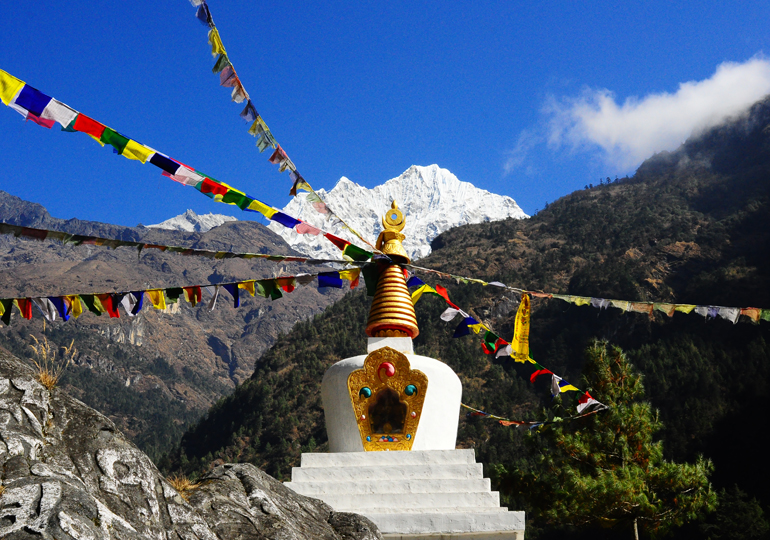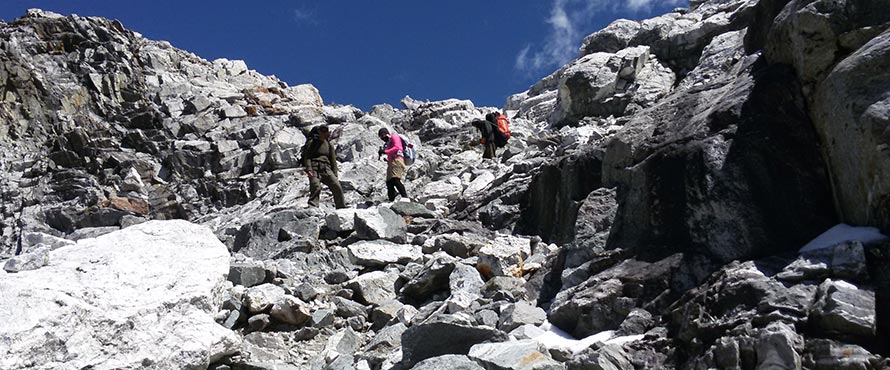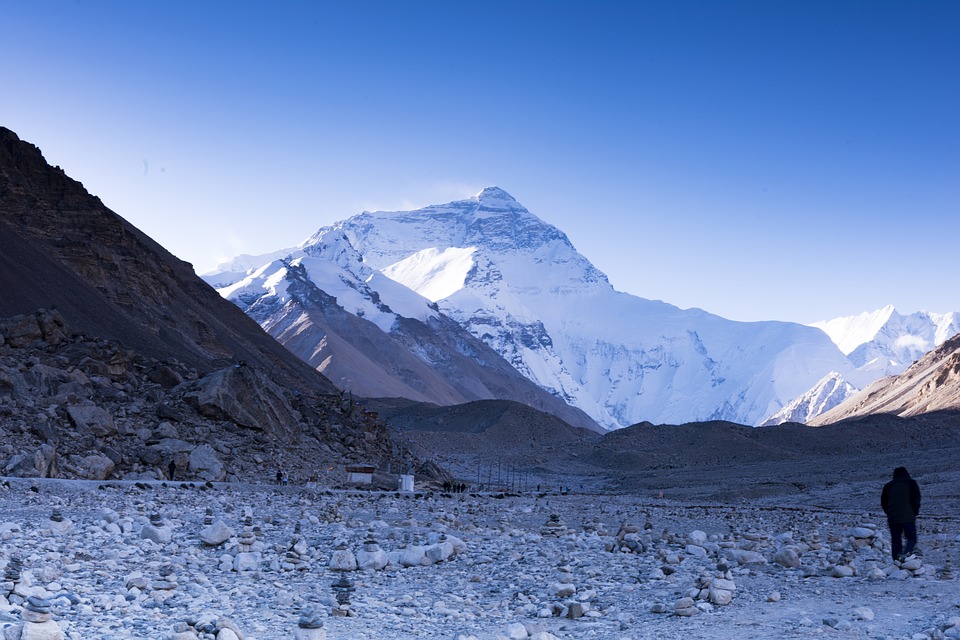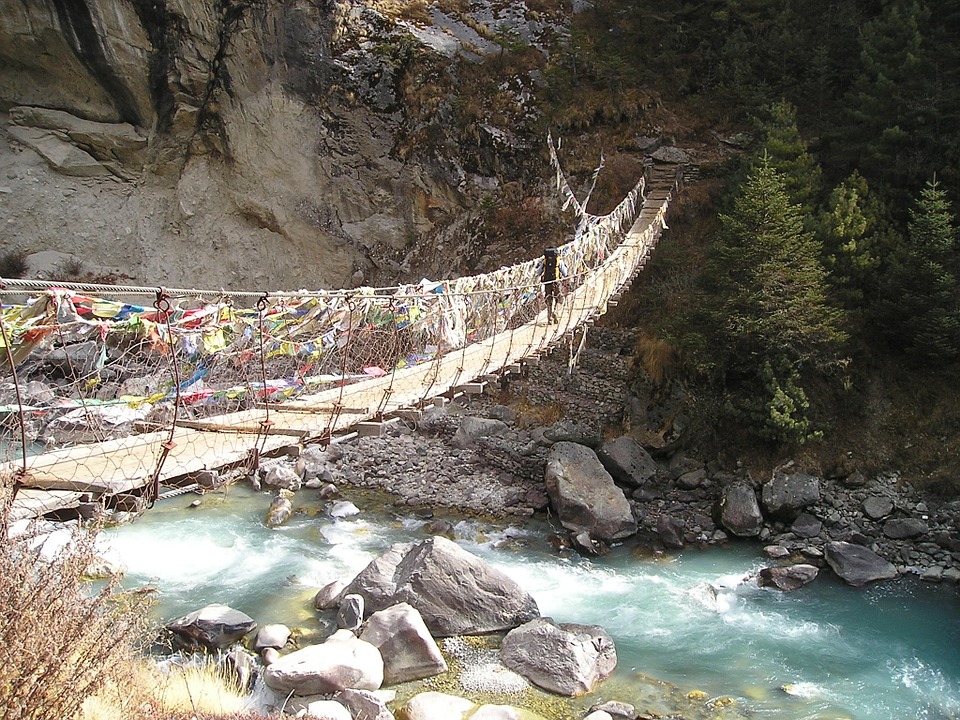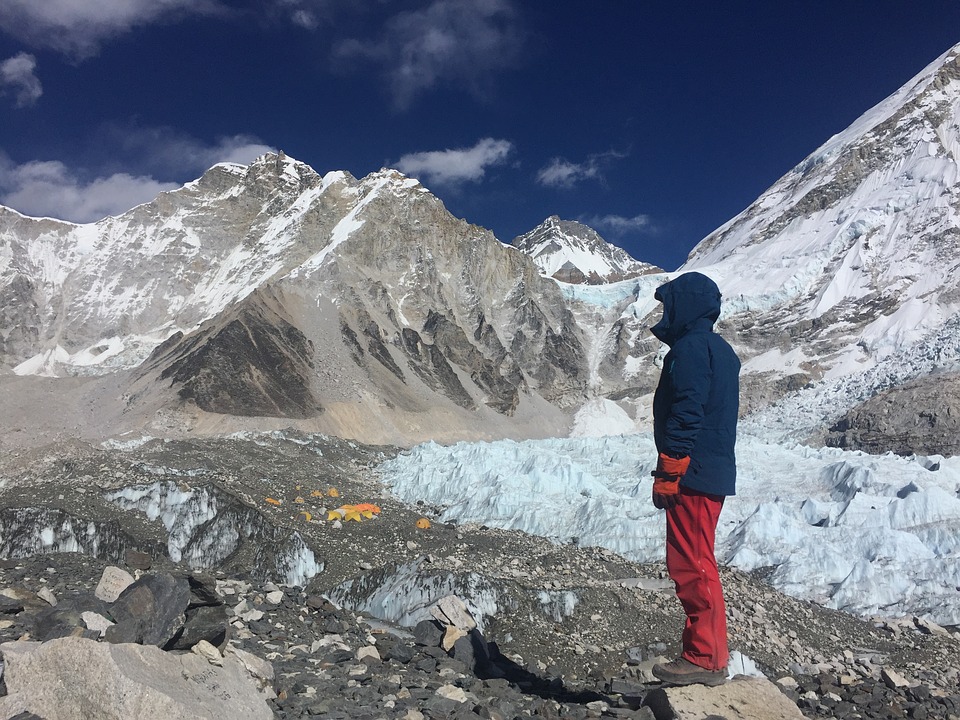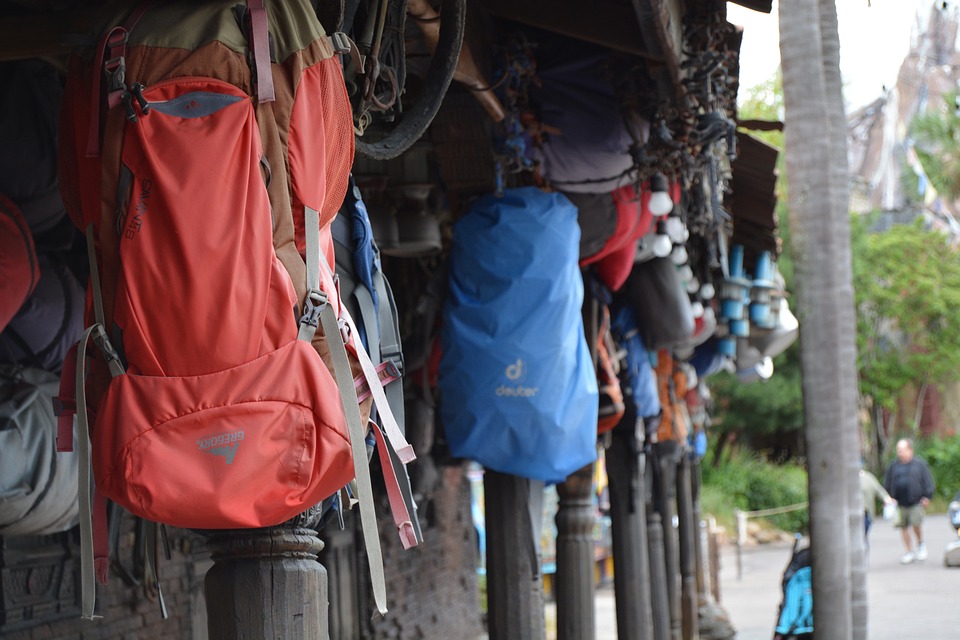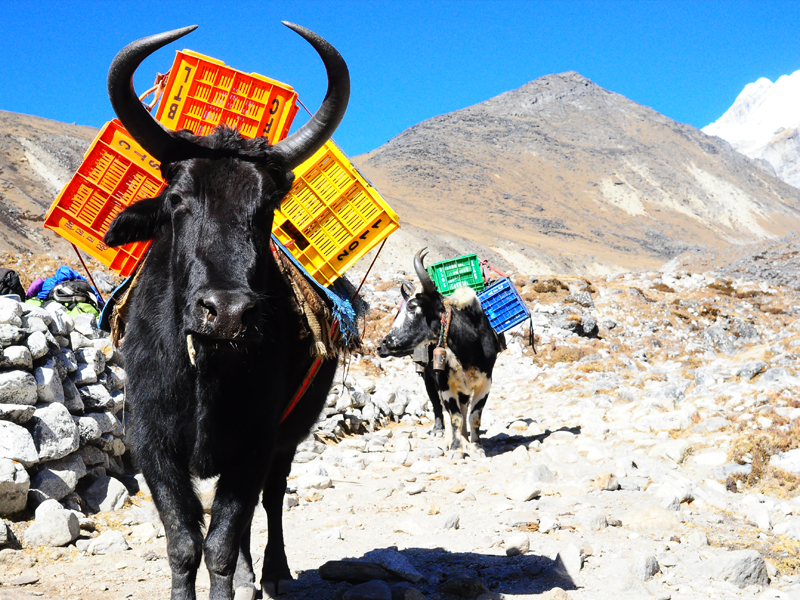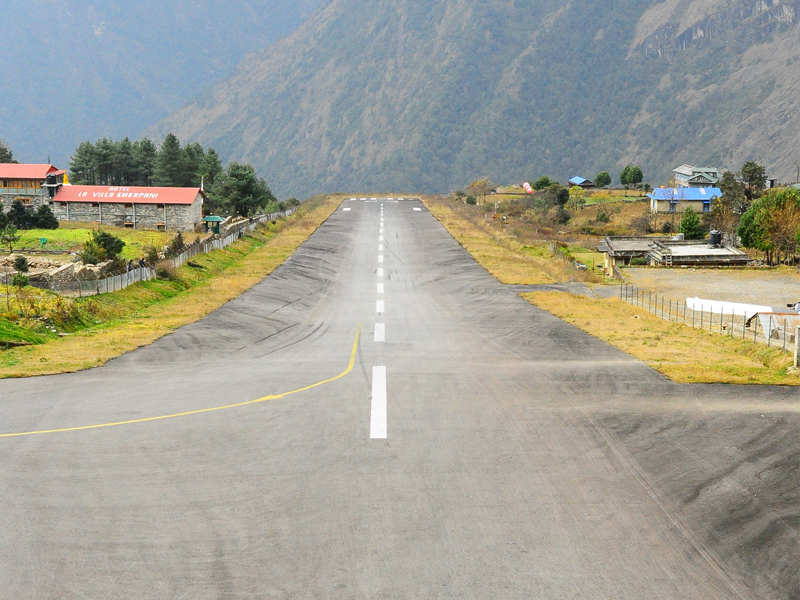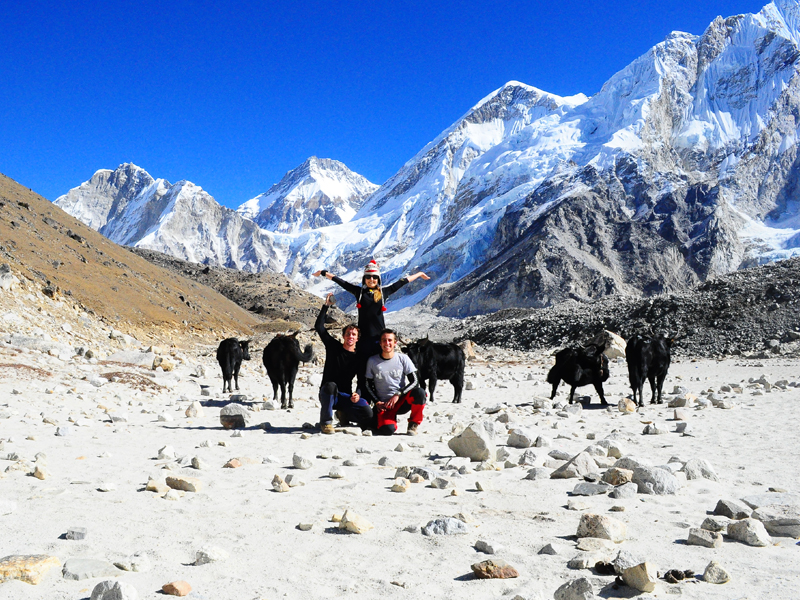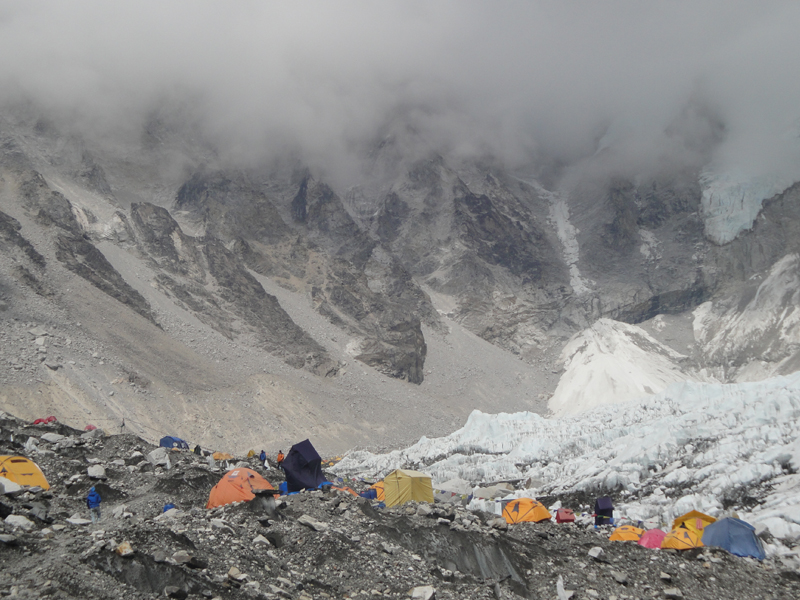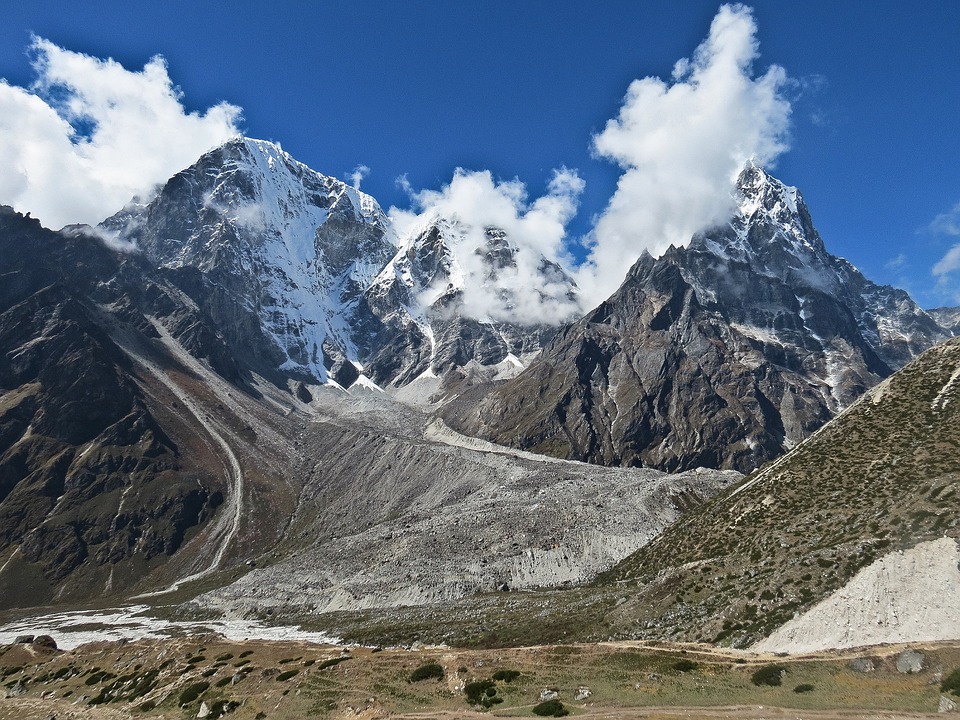14 Days Everest Base Camp Trekking
Generally, we start our trek from Kathmandu to Lukla, via a spectacular short flight (30 minutes) above the mountains. You can also choose helicopter here.
Following our landing, our adventure begins. During the trek, several days can be spent exploring the homelands of Sherpa people and seeing Buddhist monasteries as well as mysterious views of Mt. Everest and its neighboring peaks.
We usually spend two nights at Namche Bazaar, the busy market in the heart of Sherpa country and see clusters of houses set among the high summer grazing pastures of the region. We spend our time exploring and acclimatizing in Namche Bazaar, which is extremely important for you to fully enjoy the trek. Those who have fully acclimatized may trek to the Everest Base Camp however, the awe- inspiring views of chaotic ice sculptures of the Khumbu Glacier, Nuptse and the southwest face of Everest itself are the main focal points of many trekkers.
You generally share the trail with yak trains and Tibetan nomads and can choose to stay in simple but warm, welcoming, and homey guesthouses at each place during your trek even if they are very remote. Treks can vary from one week to more that a month.
Even if you are not very fit to face this trek we can help motivate you all the way to your destination with our experience and techniques in the Himalayas. We are very proud of our very experienced team.
DAY 1: Arrival in Kathmandu (1,370metres)
Upon arrival at Tribhuwan Intl Airport in Kathmandu, a representative will be waiting, well in time, to welcome you to this land of towering Himalayas.
Once reaching your hotel in a car from the airport, all you need to do is check in and enjoy the refreshment served. Then visit the local office for discussion on the trekking, introduction to the guide and porter and settlement of dues if any. Since you will still have some time left for a walk around Thamel, you can do so if you please. Let us know if you want to join a tour
DAY 2: Kathmandu to Lukla (2,840 metres) and Lukla to Phakding (2,610 metres; 3-4-hour walk)
We fly to Lukla from Kathmandu in the morning. This 30-minute flight comes with spectacular views of the hills and the Himalayas, forcing many to take their cameras out or simply use their mobile phones with attempts to capturing the beauty.We walk to Phakding Village for 3 to 4 hours after breakfast in Lukla. The trail is relatively comfortable and passes through four Sherpa villages. Houses with stone walls and colourful roofs, huge prayer stones with mantras from the teachings of Buddha carved in them, monasteries with busy budding Lamas, several mountains already in sight and rivers and waterfalls along the way, the trail already offers us a glimpse of what to expect.
Once in Phakding, one thing we can do is walk around the village or just relax on a bench in the porch of the hotel and absorb as much as we can after lunch.
Spend the night in a hotel.
DAY 3: Phakding to Namche Bazaar (3,440; 5-6-hour walk)
After breakfast, we walk for about 2 hours to Jorsalle Village for lunch. The route starts along the banks of Dudhkoshi River and crosses two suspension bridges before reaching Monjo Village. A 20-minute descent towards the end, finally, leads to Jorsalle Village, the entrance to the Sagarmatha National Park as well as the last village until Namche Bazaar.
After lunch, we walk for around 3 hours to Namche Bazaar. With the raging Dudhkoshi River mostly to the left for about half an hour before crossing a suspension bridge, the trail in its final 2 hours ascends through a pine forest. In reaching Namche, the administrative headquarter of the Khumbu Region, the ascent often demands a little extra even from seasoned legs.
Spend the night in a hotel in Namche Bazaar.
DAY 4: A day of acclimatization at Namche Bazaar
It’s time for a trip to Sagarmatha National Park Museum after breakfast. Most people use their time at the Museum trying to gain some insight into the Everest Region – about the highest peaks, animals and vegetation that rule the region as well as the Sherpa culture and experiences of many trekkers and climbers. We then leave the Museum and walk for about an hour to the Everest View Hotel for lunch.
Constructed on a site in an altitude higher than any other on earth and ideally positioned, the hotel presents all its guests with ample individual space to appreciate the grandeur – a typical Sherpa village in the Khumjung Valley below to the North-West; on a hilltop above the village, the Khumjung Monastery, where a preserved skull which the locals believe to be that of a Yeti can be witnessed upon request; Mt Khumbila, a massive rocky elevation worshiped as a deity by the locals and, thereby, a restricted peak for climbing, right above the valley; and to the North, captivating views of the Himalayas, including Mt Everest, Mt Lhotse and the beautiful Ama Dablam.
After climbing down to Namche Bazaar in the afternoon, a walk around the Bazaar is a preferred involvement to some and indulgence to others. Spend the night in the hotel.
Day 5 Namche Bazaar to Tyangboche (3,867 metres; 5-6-hour walk)
We start trek after breakfast and stop at Thanga for lunch after about 3 hours’ walk. The comfort of the trail up to Kyangzuma Village ends with the moderately challenging descent to Thanga. In Thanga, a pretty small settlement with three constructions at most, the trek stops for lunch in a teahouse. While the food is prepared, many people find waiting an experience of its own – the rumbling of Dudkhoshi River from the deep gorge below reaching the eardrums from the right, the eyes exploring the presence of the pine and rhododendron trees densely populated in the area, a gentle breeze caressing the hair while waiting for lunch hungry after several hours of walk.
After lunch, we walk for around 3 hours to Tyangboche. From here on, the trail ascends sharply mostly through forests filled with pine and rhododendron trees all the way to Tyangboche. A spectacular view of the beautiful Mt AmaDablam meets the eyes as soon as they enter the village. The next to capture the attention is the biggest monastery in the Khumbu Region, the TyanbocheMonastry.
The settlement presents a typical picture of a village in the laps of the Himalayas – houses made of stones in a cluster separated by narrow alleyways, a monastery and/or a temple highlighting the beliefs of the people, people going about displaying a simple way of life, a forest nearby, a river flowing pretty close and between two the snow caped Himalayas.
Spend the night in a hotel in Tyangboche.
DAY 6 Tyangboche to Dingboche (4,410 metres; 5-6-hour walk)
After breakfast, we walk for about 3 hours to Pangboche Village for lunch. With a downhill to the village of Diboche before a long gradual ascent, through a rhododendron forest, across a bridge, the trail finally brings its travelers to Pangboche Village. With narrow footpaths carved along the edges of hilltops, parts of the route demand alertness while being constantly drawn by the breathtaking views on offer in front, now that Mt AmaDablam gets closer and closer with every step forward.
After lunch in Pangboche, we start walking again for about 3 hours to Dingboche. With the magnificent Mt AmaDablam to the right all the time, this course triggers some contemplation into the phenomena in the immediate environment along the way – yaks with loads on their backs walking in a file, a tahr jumping care freely on slopes only perhaps the most daring would think of giving a shot at and a male impeyan pheasant – the national bird of Nepal – dancing with a hope to impressing a female nearby who till now seems to simply be turning a blind eye … a smile and a gentle shake of the head in sincere appreciation of the visually appealing yet intellectually challenging ways of things.
Dingboche, with around forty households, is home to approximately two hundred locals. Spend the night in a hotel in Dingboche.
DAY 7: A day of acclimatization in Dingboche
After breakfast, we pack our lunch and go up a steep climb for around three hours to NangkarTshang at an altitude of 5,616 metres. From this vantage point, the view when facing Norht includes Mt Lothse and Mt Nuptse in the front, LotseShar and Peak 38 and Island Peak to the front-right, Mt AmaDablum to the right, Mt Thamsherku, Mt Kantega and Taboche Peak to the back and CholaTse Peak and Lobuche Peak to the left.
After spending some time in Nangkar Tshang, we come back to Dingboche and spend the night here.
DAY 8: Dingboche to Lobuche (4,910 metres; 4-5-hour walk)
After breakfast, we walk for about 4 to 5 hours to Lobuche Village. A steep climb most of the way, the trail starts out of Dingboche, past a chorten, ascending to Duglaat the end of the terminal moraine of Khumbu Glacier … climbing steeply to ChukpoLari past a line of memorials commemorating climbers who have lost their lives in Everest, and, finally, easing off for the last 20 minutes or so. Sensing the approaching destination, the legs, which have otherwise almost given up to the demands of the walk, gather all they’ve got with this newly found enthusiasm.
After lunch, Lobuche, a tiny hamlet with a few teahouses, welcomes its visitors to either investigate the ridge on the opposite side of the Khumbu Glacier or watch the fascinating changes in colour the sunset brings on almost the top half of Mt Nuptse.Spend the night in a teahouse in this settlement.
DAY 9: Lobuche to Gorakshep (5,160 metres) and Gorakshep to Everest Base Camp (5,320 metres) 7-8-hour walk
After breakfast, we walk for about 3 hours to Gorakshep. After a three-hour climb to Lobuche Pass on rocky paths and under windy conditions followed by a brief stop for a cup of tea, the trek stops at Gorakshep for accommodation arrangements and lunch.
After lunch, we start walking again for 2 hours to Everest Base Camp. Walking on the lateral moraine of the Khumbu Glacier, audibly making cracking sounds, most manage to push forward up the grueling climb uphill purely on determination as the level of oxygen drops to around 50 % lower to that at the sea level. A stop on the way here for a short while … five of the world’s highest mountains crammed in a small area … fascinating!
Ascending the side of the glacial moraine for a couple of more hours before landing on the moraine itself, the trail finally reaches the Everest Base Camp. Photographs, smiles, hugs, in sheer admiration of the endurance to the Base Camp of the highest mountain on earth.We walk back to Gorakshep and spend the night.
DAY 10: Hike to Kala Pathar (5,550 metres) and Gorakshep to Pheriche (4,240metres) 6-7-hour walk
We start early morning and walk for almost 2 hours to Kala Pathar. The almost 200-metre climb, taxing by now after several days on the trot, leads to the top of Kala Pathar. A 3600 view of the Khumbu Himalayan range – Mt Everest and Mt Lhotse in the front, Lingtren and Khumbutse Peaks to the front-left, Mt Pumori to the left, Numerous other peaks to the back-left, back and the back-right, Mt Taboche and Cholatse to the right, Mt Nuptse to the front-right.
After lunch, we start walking to Pheriche. Through a large glacial valley with Cholatse (6,335 metres) and Tobuche Peak (6,495 metres) to the right and Pokalde (5,693 metres) and NangkarTshang (5,616 metres) to the left, from a different route from the end of Khumbu Glacier in Dugla, the descent puts on a smile on all faces despite the force of the cold wind hitting them constantly. Above the Tsola River, primarily a farming village growing potatoes and buckwheat as well as keeping yaks, Pheriche today provides accommodation and food to trekkers and climbers through its many lodges in place.
Spend the night in Pheriche.
DAY 11: Pheriche to Namche Bazaar (3,440 metres; 5-6-hour walk)
After breakfast, we walk downhill to Tyangboche. After lunch here, we walk the rest to Namche Bazaar. Spend the night in a hotel in Namche.
DAY 12: Namche Bazaar to Lukla (7-8-hour walk)
We leave Namche Bazaar after breakfast and stop at Phakding Village for lunch after about 4 hours. We walk the next 4 hours (approximately) to Lukla.
Spend the night in a hotel in Lukla.
DAY 13: Lukla to Kathmandu
We fly back to Kathmandu and reach the hotel in time for lunch.
The afternoon is for shopping for some, for buying souvenirs for others and for doing whatever they please for still others. In the evening, however, please allow us the pleasure of your company during the fare-well dinner.
Spend the night in the hotel of choice
DAY 14: Departure from Nepal
If you have a morning flight, we leave for Tribhuwan Intl Airport early morning in a car arranged by the office. If your flight is in the late afternoon or evening, only you decide your involvement or indulgence as you may please before leaving for Tribhuwan Intl Airport in the vehicle.



